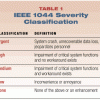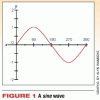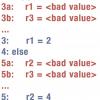|
Welcome to Software Testing and Quality Engineering Technical Editor Brian Marick introduces the first issue of STQE magazine. He says the magazine "is for people who get their hands dirty, whether by writing tests, cranking out code, managing others, or--perhaps the hardest task of all--being the internal QA consultant who has no direct authority but must somehow persuade ten projects with impossible deadlines to think strategically." |
Brian Marick
June 26, 2002 |
|
|
What's in a Name? Technical Editor Brian Marick outlines a goal for the magazine and its readers: gradual process improvement, driven by immediate needs. |
Brian Marick
June 26, 2002 |
|
|
Quality Assurance and Testing Brian Marick argues for using testers at the requirements analysis stage of a project. He says, "While QA is primarily about process, testing—my specialty—is about product. Whatever else a tester might do, she certainly eventually exercises the product with the aim of discovering problems a user might encounter. This essay is about that 'whatever else' the tester does." |
Brian Marick
June 26, 2002 |
|
|
|
Normal Processes Using a sociological theory as his starting point, Technical Editor Brian Marick shows how sometimes systems can encourage local problems to blossom into system-wide catastrophes. |
Brian Marick
June 26, 2002 |
|
Big Ball of Mud Much of recent systems theory revolves around applying ideal software development patterns. Big Ball of Mud, in contrast, is for those of us who live and work in the real world, where most systems emerge haphazardly from minimally controlled chaos under constrained development conditions. Bar Biszick recommends and describes the Big Ball of Mud Web site. |
Bar Biszick
June 26, 2002 |
|
|
Book Review: Mastering the Requirements Process Brian Lawrence points to Mastering the Requirements Process as a valuable reference book. The book presents a complete step-by-step method for gathering, modeling, and specifying requirements. Along the way the authors offer easy-to-understand and appropriate examples that nicely illustrate how to apply their techniques. |
Brian Lawrence
June 26, 2002 |
|
 |
Tracking Severity: Assessing and Classifying the Impact of Issues (a.k.a. Defects) How does one categorize Severity? Should you use numbers like 1, 2, 3; generic names like High, Medium, Low; or more specific names? A telephone switching system, for example, might use industry-specific categories such as "system issue," "line issue," or "call issue." Other environments, as we'll see in this article, tailor classification terms to meet their own functional needs. |
Tim Dyes
June 26, 2002 |
 |
Heuristic Test Oracles For automated testing, expected results are generated using a test oracle. Here is a look at how heuristic oracles can strike a balance between exhaustive comparison and no comparison at all. |
Douglas Hoffman
June 26, 2002 |
 |
How We Get More Power from Existing Tests Richard Schooler works with the development and testing of InCert's software behavior analysis tools. In this article, Schooler describes how InCert leveraged their automated tests by thinking carefully about changes that allowed test reuse. |
Richard Schooler
June 26, 2002 |
|
|
A look at QARun, a GUI test automation tool QACenter provides an integrated solution that will help you test GUI applications and track the bugs you find. As with most tool suites, you get the best results if you use all the features. If you don't need some parts of QACenter, the integration is less important to you. Then the strengths and weaknesses of the individual tools, like QARun, are more significant. |
Noel Nyman
June 26, 2002 |
Pages
Upcoming Events
| Apr 27 |
STAREAST Software Testing Conference in Orlando & Online |
| Jun 08 |
AI Con USA An Intelligence-Driven Future |
| Sep 21 |
STARWEST Software Testing Conference in Anaheim & Online |
| Oct 27 |
STARCANADA Software Testing Conference in Toronto |



